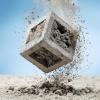
Breaking News
 Senior IDF Official Arrested After Leaking Footage Exposing Israeli Torture Of Palestinian POWs
Senior IDF Official Arrested After Leaking Footage Exposing Israeli Torture Of Palestinian POWs
 Food stamp cutoff triggers wave of STORE THEFTS as Democrats weaponize hunger for political gain
Food stamp cutoff triggers wave of STORE THEFTS as Democrats weaponize hunger for political gain
 Brighteon Broadcast News, Nov 4, 2025 - Cows dropping dead, robotic lawnmowers...
Brighteon Broadcast News, Nov 4, 2025 - Cows dropping dead, robotic lawnmowers...
 Evangelicals and the Veneration of Israel
Evangelicals and the Veneration of Israel
Top Tech News
 The 6 Best LLM Tools To Run Models Locally
The 6 Best LLM Tools To Run Models Locally
 Testing My First Sodium-Ion Solar Battery
Testing My First Sodium-Ion Solar Battery
 A man once paralyzed from the waist down now stands on his own, not with machines or wires,...
A man once paralyzed from the waist down now stands on his own, not with machines or wires,...
 Review: Thumb-sized thermal camera turns your phone into a smart tool
Review: Thumb-sized thermal camera turns your phone into a smart tool
 Army To Bring Nuclear Microreactors To Its Bases By 2028
Army To Bring Nuclear Microreactors To Its Bases By 2028
 Nissan Says It's On Track For Solid-State Batteries That Double EV Range By 2028
Nissan Says It's On Track For Solid-State Batteries That Double EV Range By 2028
 Carbon based computers that run on iron
Carbon based computers that run on iron
 Russia flies strategic cruise missile propelled by a nuclear engine
Russia flies strategic cruise missile propelled by a nuclear engine
 100% Free AC & Heat from SOLAR! Airspool Mini Split AC from Santan Solar | Unboxing & Install
100% Free AC & Heat from SOLAR! Airspool Mini Split AC from Santan Solar | Unboxing & Install
 Engineers Discovered the Spectacular Secret to Making 17x Stronger Cement
Engineers Discovered the Spectacular Secret to Making 17x Stronger Cement
Janus Graphene Could 10X the Energy Capacity of Sodium-ion Batteries

"We have added a molecule spacer on one side of the graphene layer. When the layers are stacked together, the molecule creates larger space between graphene sheets and provides an interaction point, which leads to a significantly higher capacity," says researcher Jinhua Sun at the Department of Industrial and Materials Science at Chalmers and first author of the scientific paper, published in Science Advances.
Ten times the energy capacity of standard graphite
Typically, the capacity of sodium intercalation in standard graphite is about 35 milliampere hours per gram (mA h g-1). This is less than one tenth of the capacity for lithium-ion intercalation in graphite. With the novel graphene the specific capacity for sodium ions is 332 milliampere hours per gram. the energy capacity boost gets sodium batteries near the capacity of lithium in graphite. The results also showed full reversibility and high cycling stability.



